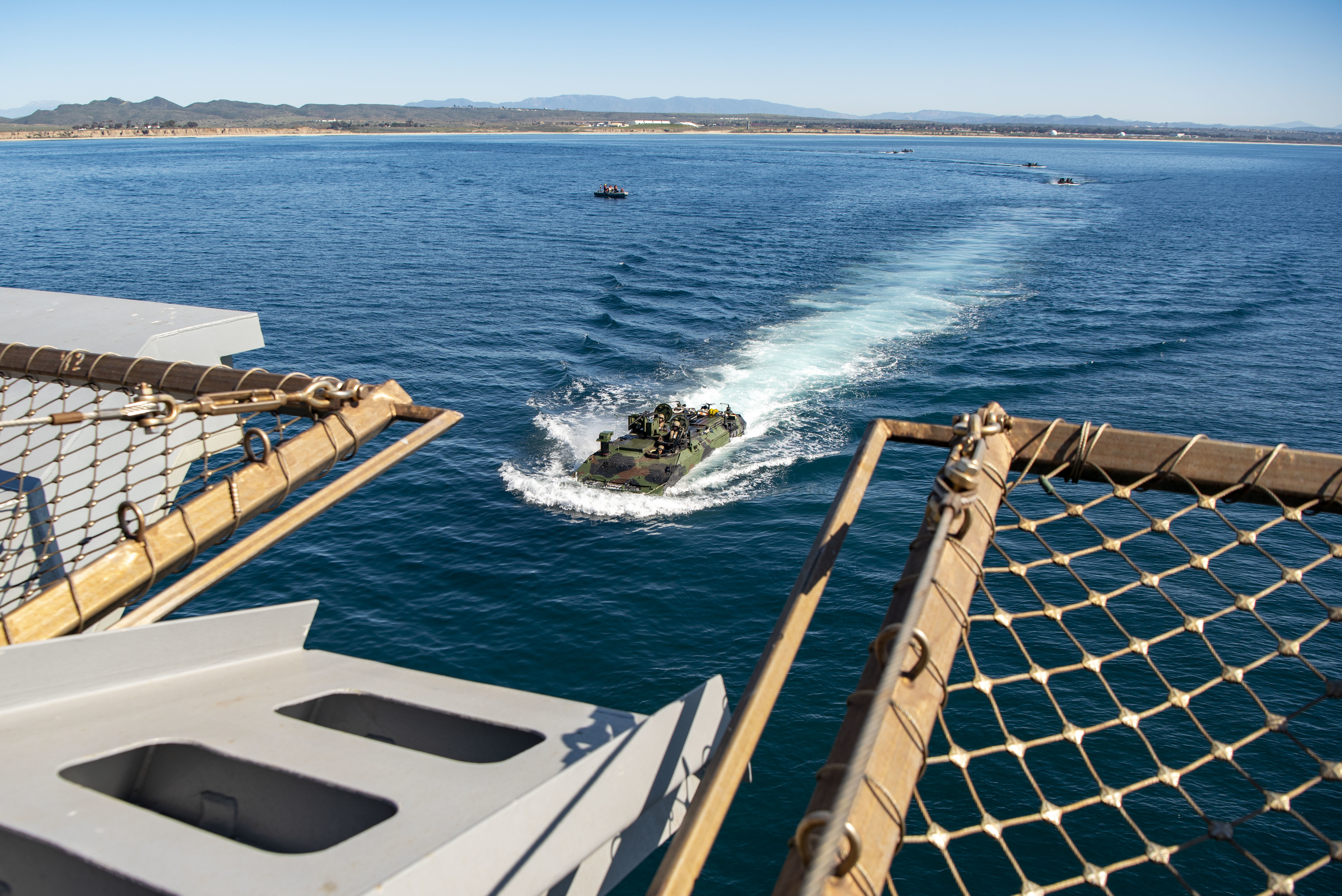
CAMP PENDLETON, Calif. – The Marine Corps’ plan to resume waterborne operations with Navy ships takes a big step when assault combat vehicle crews and infantry Marines team up for the next stage of return-to-water training.
Marines operated ACVs at sea last month with amphibious transport dock ship USS Anchorage (LPD-23) for two days in what was the first full waterborne and well-deck operation since problems with the vehicle’s tow-rope system prompted an operational pause in August.
This time, Marines in a full platoon of 18 vehicles will put their vehicles through a wide range of training in “daytime, nighttime, in various and different mission profiles. This is all part of our progression to get back to full operational capability of the ACV,” Maj. Gen. Roger Turner told USNI News.
The 1st Marine Division – the West Coast-based infantry command under I Marine Expeditionary Force – has fielded 75 new vehicles so far. The 3rd Assault Amphibian Battalion, one of the service’s two such battalions, provides platoons of ACV crews and vehicles to Fleet Marine Force units, including battalion landing teams that deploy with sea-going Marine expeditionary units.
“We’ve been building capacity and capability. We’re exercising a very deliberate approach between us and the Navy, because we didn’t do it for so long,” Turner said this week in an interview at his office, referring to the two decades of land-based combat and insurgency operations in Afghanistan and Iraq. “It is a new platform, and we’re learning lessons about the new platform. It’s a very capable platform, but … it’s really the first operational use.“
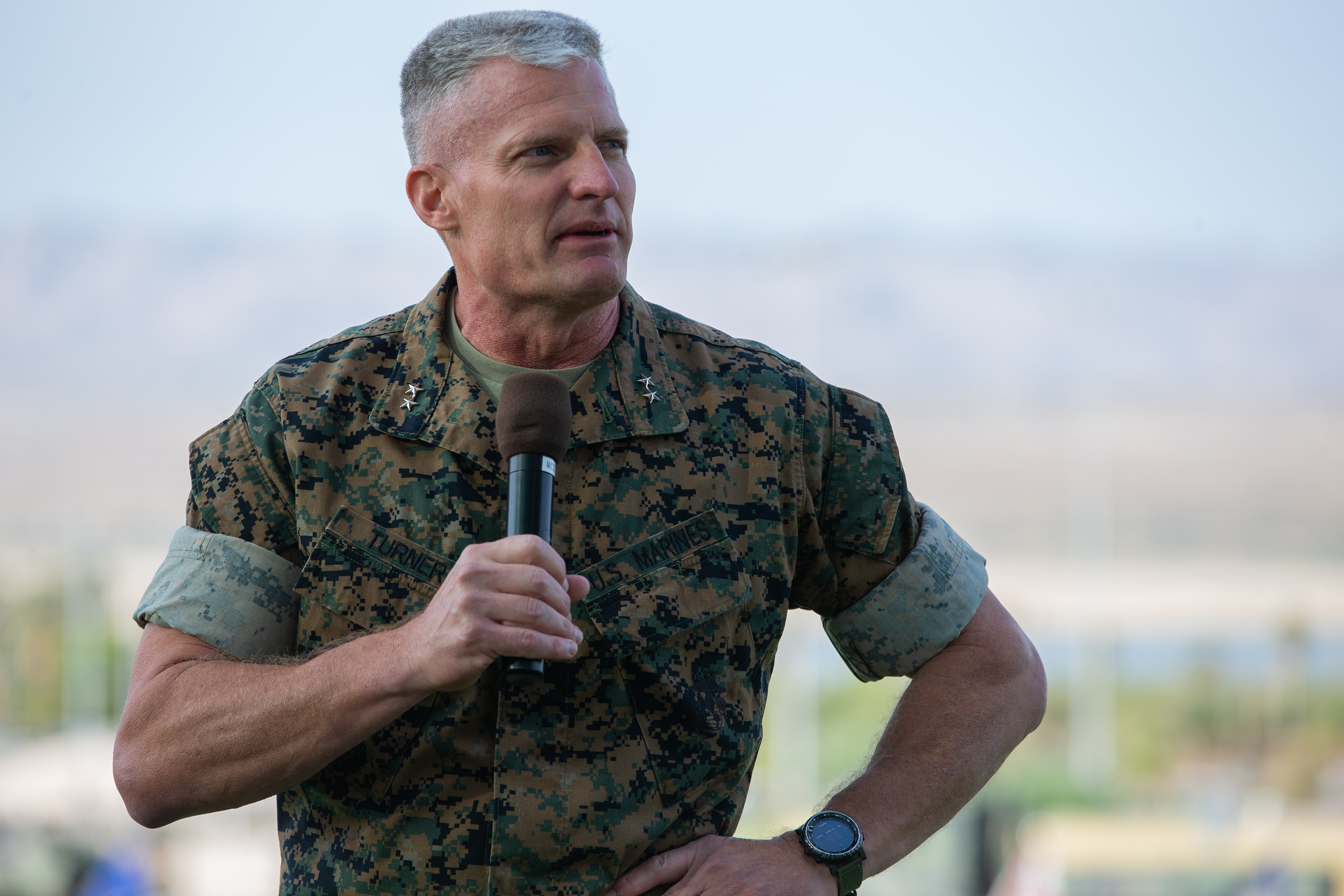
As Marines now focus on operations with the Navy, last month’s training also enabled certification of Anchorage well-deck crews to conduct ACV operations, an important step to ensure smooth and safe launch-and-recovery operations. This week’s training drills will build on that ship-to-shore training and mark a key step to integrate the ship with a full ACV platoon, both of which will train and deploy together with the 13th Marine Expeditionary Unit for the ACV’s inaugural deployment, Turner said.
As Anchorage’s deck crew gets familiar with ACV operations on ship and at sea, the training let Marines work through their own familiarity with the vehicle, which is replacing older amphibious assault vehicles, and sort through differences compared to the aging AAVs. The tracked AAV maneuvers easily around corners and in turns on an amphibious ship, compared to the ACV. “Since the ACV is wheeled, it can’t do neutral steer,” Turner said. AAVs can quickly pivot by stopping one track and using the other, “and they can just spin inside their own diameter. With a wheeled vehicle, you’ve got to do a three-point turn, at least.”
Turner said he’s excited at the ACV’s capabilities compared to the AAV, with “significant enhancements with mobility, the range it can go, the protection it provides. You’ve got a stabilized weapons platform, amazing comms capabilities.”
The vehicle’s command-and-control system “is amazing. It’s got really good reliability. It’s got really good mobility. It’s got really good protection. It’s got really good lethality, so it’s going to employ differently than the AAV,” he said. “As we build out this first platoon, it’ll really be up to the first MEU to figure out how they’re going to employ it, what they’re going to do with it.”
The ACV “is a pretty significant change from what we’re using, so we’re keen to learn those lessons and all that. Right now, we’re working the mechanics of ship-to-shore and communications, and how do you get it embarked, how does it fit?” he added. Slight differences between the vehicles require different placement of well-deck sailors who use flags to signal ACV crews.
As the ACV platoon begins pre-deployment training and deployment, Marines will have real situations to fine-tune the logistics of operating at sea and aboard ship.
“We’ll really see how to work the supply chain if they end up on a far-flung port,” Turner said. “Can we get the parts to them, can they get the parts to the ship? Can they fix it on the ship? That’ll be the lessons we learn during the initial deployment,” he said, adding, “We want to really get the training piece right first.”
All About ‘Naval Warfighting’
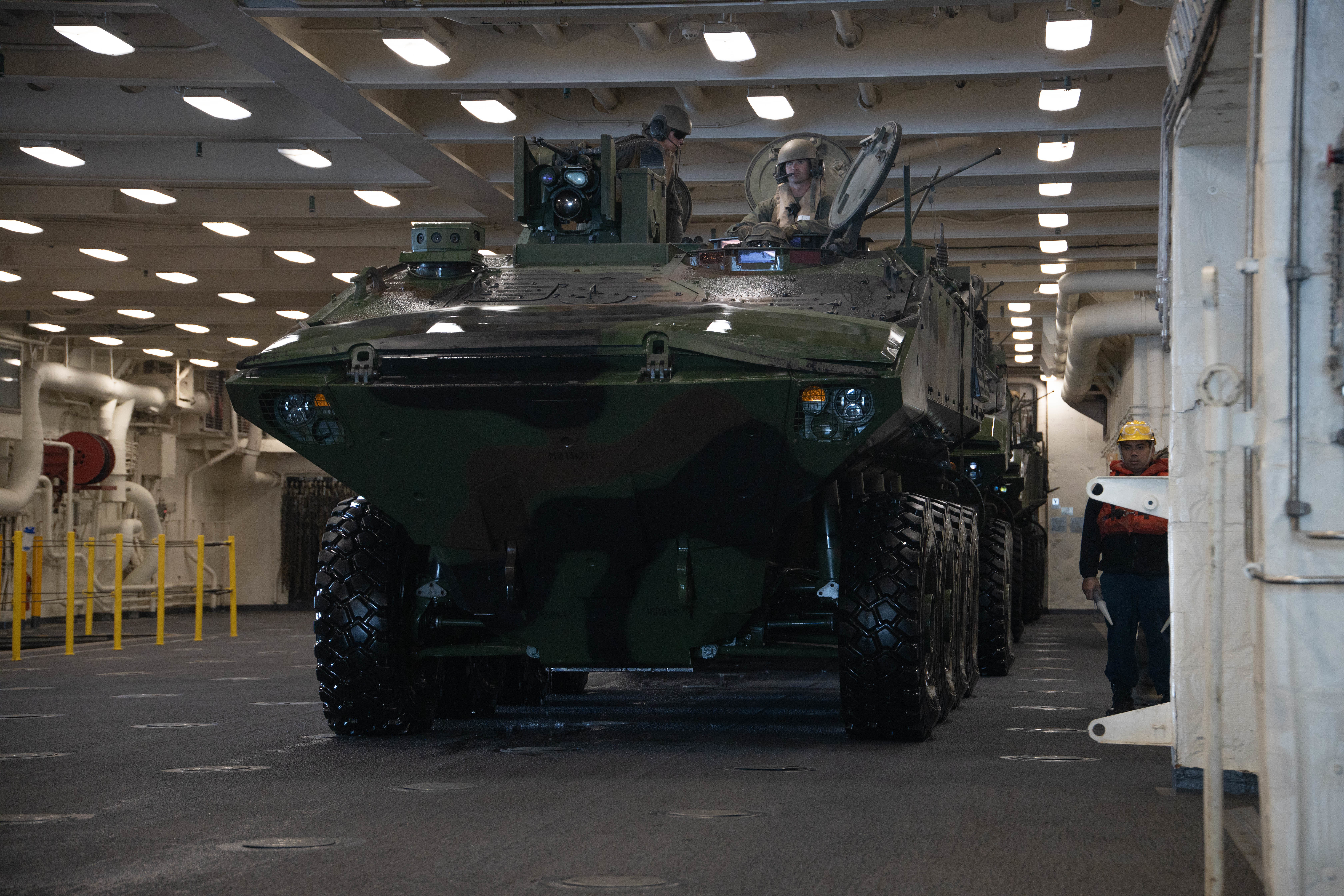
The integrated, return-to-water training came to be following the fatal 2020 sinking of an AAV, which resulted in the deaths of one sailor and eight Marines while returning to ship after a mechanized amphibious raid on San Clemente Island. That mishap halted most blue-green waterborne operations and three separate investigations revealed significant failures and missteps, in addition to gaps in training and standard operating procedures. Investigators and senior commanders noted more and improved integrated training operating at sea are needed to ensure safe waterborne operations.
That’s critical as both services press on with integrated training, in line with the Commandant’s Planning Guidance, the chief of naval operations’ Distributed Maritime Operations concept, the National Defense Strategy and other concepts. Marine Corps commanders have been renewing relationships with gray-hull captains and ship crews, focused on future missions for the Expeditionary Advanced Base Operations in the maritime environment, particularly in the Indo-Pacific region.
“We really talk about naval integration, but we’ve kind of advanced that concept a little bit. It’s really about naval warfighting,” said Turner. “Integration almost denotes that you’re still separate but you work together, as opposed to being seamlessly tied.”
The two-star general sees the relationship with Expeditionary Strike Group 3, U.S. 3rd Fleet and ships as “really just the naval war fight. Integration is the requirement, but that’s not the goal. The goal is to be good at naval warfighting.”
“It’s really just a mindset shift between us and our Navy counterparts. This is a combined Navy force that is going to work together to accomplish objectives of the fleet commander. Some of that is land-ward, some of that is sea-ward,” Turner said. “But we’re kind of agnostic as to who does what part. How do you do naval warfighting against a peer-level adversary that has the ability to contest some of the domains so effectively?”
“It’s really how do you do naval warfighting against a peer adversary in a multi-domain fight. I think the answers to that are what we’re developing everywhere – not just here and at 3rd Fleet but across the naval services – to be more effective as we re-envision the fight that we could encounter,” he added.
The Division’s Role
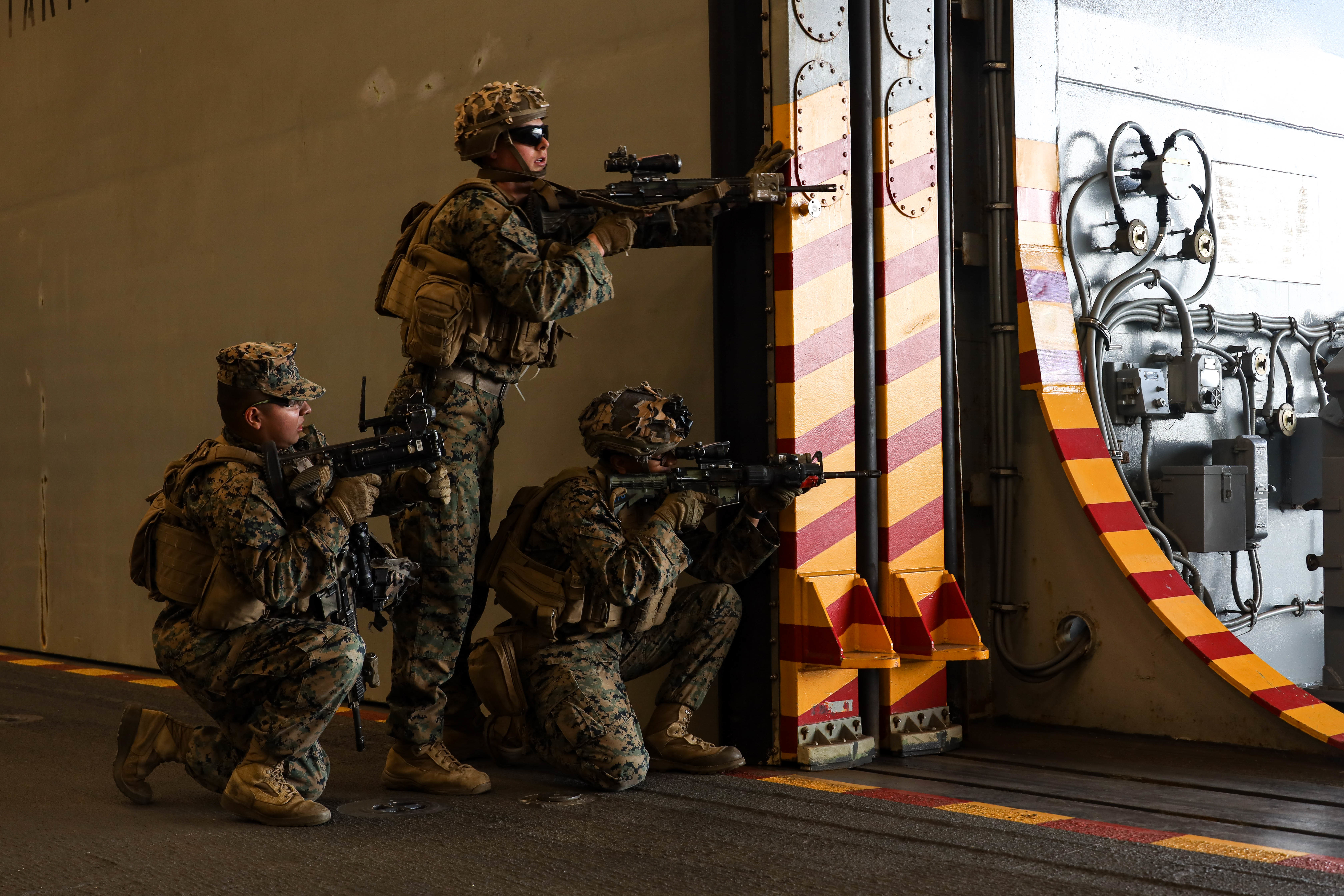
“The first imperative is being able to fight a peer adversary,” Turner said of the 1st Marine Division, whose infantry, artillery and fire control units give I MEF its ground combat power.
That’s a different problem set than what Marines encountered in Afghanistan, Iraq, Syria and the Global War on Terror. “That’s what the nation needed us to do, and we went and did it. The Marines performed brilliantly at that stuff over the last 25 years and folks take a lot of pride in what we’ve done over that time,” he said.
Today’s big threat comes from the return to great power competition, with “a resurgence of multiple peer adversaries in the world… who have the capability and capacity to challenge us,” he said. That requires the Division adjust its capabilities to fight a peer-level adversary in the multi-domain fight – “that’s space, cyber, land, air and maritime. Can you compete and win at all echelons against a peer-level adversary?”
“Can we create a competitive advantage against a peer adversary in a multi-domain fight? A couple of years ago, I don’t think we had fully embraced what that would be like. So it’s forced us to change tactics, techniques and procedures, because there’s things you can get away with when you’re fighting” in insurgency and stability operations “that you can’t get away with in a peer fight. You don’t throw out all the experience you’ve gained from Iraq and Afghanistan, but you have to re-image what’s going to be successful in fighting a peer adversary.”
Eventually, “you continue to improve yourself, peer versus peer in a multi-domain fight. Then you start to think about how you might compete with in that sort of a conflict with our naval counterparts,” he added. “How do this as a combined naval force against a peer adversary in a multi-domain fight?”
The Marine Corps’ vision for fighting in the future calls for smaller units operating on the move hopping from island to island. Refining the concepts been a big goal in 1st Marine Division’s annual Steel Knight exercises.
Training in Mind
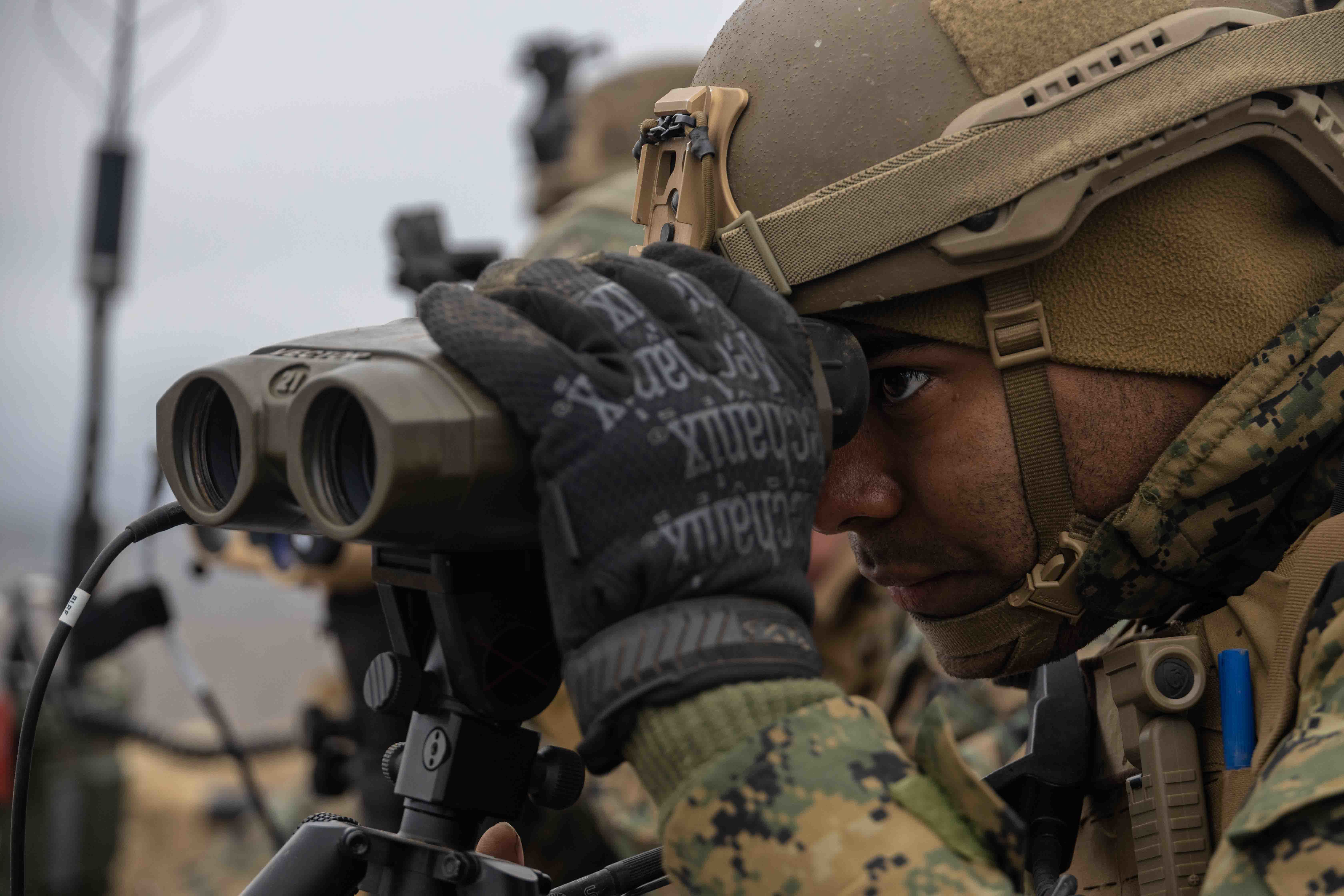
Steel Knight is the Division’s annual large-scale exercise that replicates the large, distributed operational environment envisioned in regional war plans. While the Marine Corps Air-Ground Combat Center in the Mojave desert has hosted much of the training, in recent years officials have expanded training to include more integrated naval operations in contested space scenarios.
In December 2020, the Division incorporated more naval elements into Steel Knight with San Diego-based Expeditionary Strike Group 3 in a parallel exercise, Dawn Blitz. “We learned a lot of good lessons in Steel Knight ’21,” Turner said. Officials realized “we’re still not where we need to be… so we totally turned all of our focus to the naval warfighting piece” as they planned for Steel Knight ’22, held in December 2021.
During that month-long exercise, Marine Corps and Navy leaders came together at Expeditionary Training Group Pacific in Coronado, Calif., in a simulation of a major operational war plan. “That was really good for us,” he said. It provided a framework for the thousands of Marines and sailors training at multiple locations, including San Clemente Island, Fort Hunter Liggett, Twentynine Palms and aboard ship.
Turner said a key lesson was identifying at what level and where a single, Marine-Navy staff is needed, rather than having separate staffs working nearby with service liaisons. “We found that at certain levels, you just had to be one unit,” he said. “It’s not effective to be adjacent. You really need to actually combine together.”
Division Takes Aussie Lead
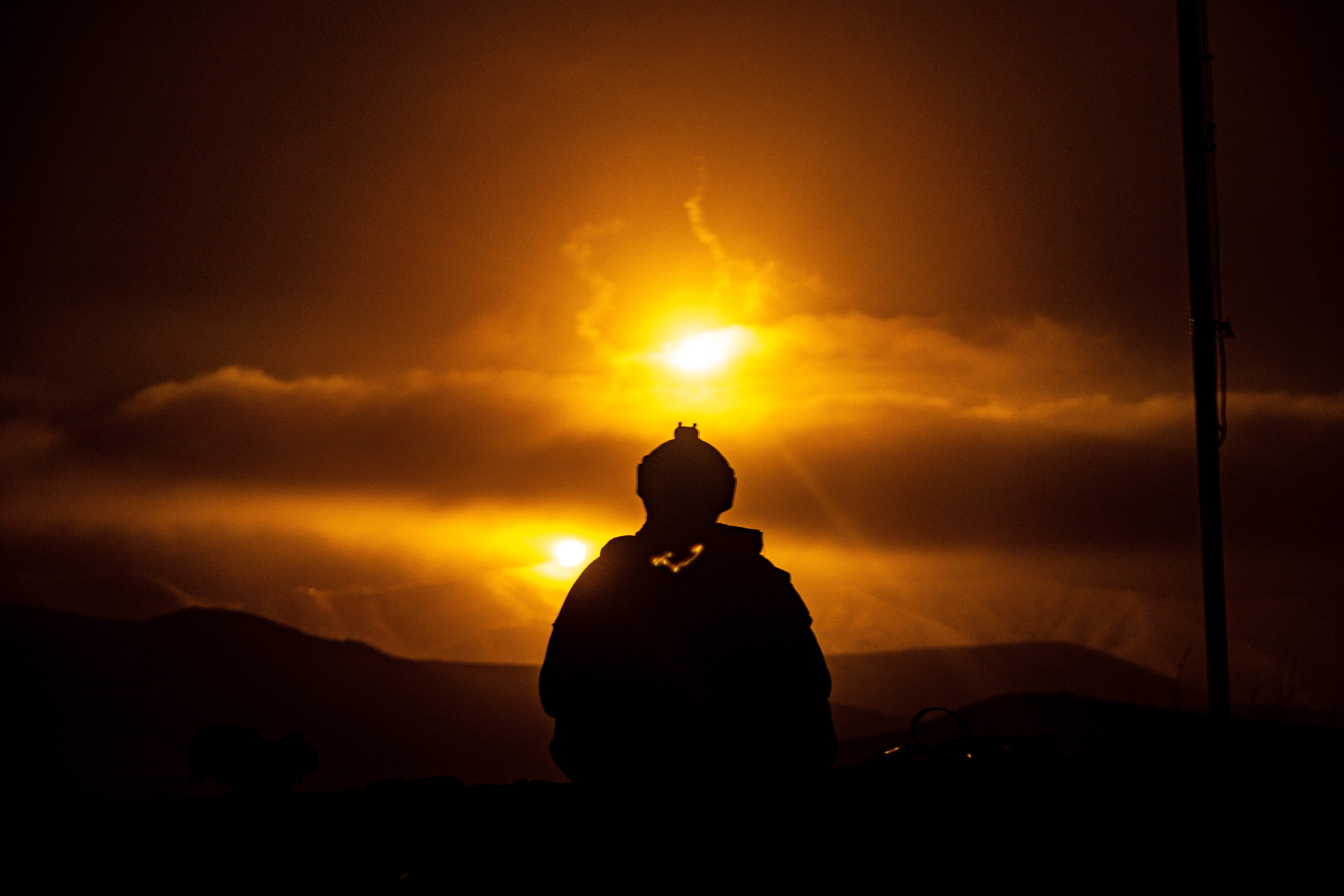
Steel Knight ’22 also enabled 1st Marine Division to certify units deploying this month as part of Marine Rotational Forces-Darwin.
While I MEF units had deployed to support those rotations overseen by a command element from III MEF, now I MEF is in charge of the mission and MRF-Darwin rotations, taking over that mission from Japan-based III MEF. This month, 5th Marine Regiment will deploy a command element to lead the air-ground force.
“It’s the first time we’ve had a colonel-level warfighting headquarters” deploying to Australia, Turner said, noting it includes staffing capabilities in logistics, intelligence and maneuver fires.
“Along with the regimental headquarters, the Division this year will send engineers and artillery crews to join III MEF units to round out the roughly 2,500-member force. I think the vision is for it to be an increasingly a I MEF show,” he said.
The Division picks up the Australia rotation just after completing support to Special Purpose Marine Air-Ground Task Force rotations in U.S. Central Command and U.S. Africa Command. The Marine Corps quietly ended those units last August.
Marine units rotate into Australia for six months, to avoid the monsoonal weather. “The actual composition of the force is going to vary. It’s a similar purpose-built capability we will deploy there,” with a focus on bilateral and multilateral training “that allows us to get closer with our Australian counterparts and work with them in any sort of a multilateral environment,” Turner said. “We are super excited about this.”
During Steel Knight, 5th Marines was certified to deploy as MRF-Darwin, and “we trained in a lot of the emerging concepts” of EABO and other goals of Force Design 2030, he said. “Now that we are starting to see Force Design capabilities actually arrive, we have a pretty clear sight picture” of what those will add for the next iterations of Steel Knight and Darwin rotations. “We want to have the command-and-control figured out before the new equipment arrives,” he added.
Pride at Abbey Gate

Turner, who commanded Regimental Combat Team 5 during an Afghanistan deployment, took command of the 22,000-member 1st Marine Division in September 2020. Last month, during 1st Marine Division’s Colors Ceremony at Camp Pendleton, he reflected on the unit’s storied history and thought about the actions of Division members including, 2nd Battalion, 1st Marines, in the chaotic, final days of the U.S. military mission in Afghanistan.
Drone footage from the Aug. 26, 2021, deadly attack shows Marines running at full-speed toward the gate, right after a huge explosion happened at Abbey Gate leading into Kabul International Airport. A suicide bomber in the packed crowd trying to reach the airfield detonated explosives that killed 13 U.S. troops – 11 Marines, a Navy corpsman and a soldier – a recent Defense Department investigation determined. Initial reports had indicated the suicide attack was part of a complex attack, with additional bombers or gunmen attacking quick-reaction forces and first-responders, but the investigation found it was a lone bomber.
“It’s a really amazing contrast to see thousands of people running away from the blast and you see 50 Marines running as fast as they could in full kit in August to get to the blast scene,” Turner told USNI News. “I’ve been involved in suicide bombings before. Everybody knows now there was only one bomber. But those Marines didn’t know that. Normally bombers come in multiples. So they’re running at full speed to the blast scene not knowing what’s next.”
“What they showed was just incredible,” he said. “We’re just incredibly proud of them. I think it represents the type of units that we produce.”





